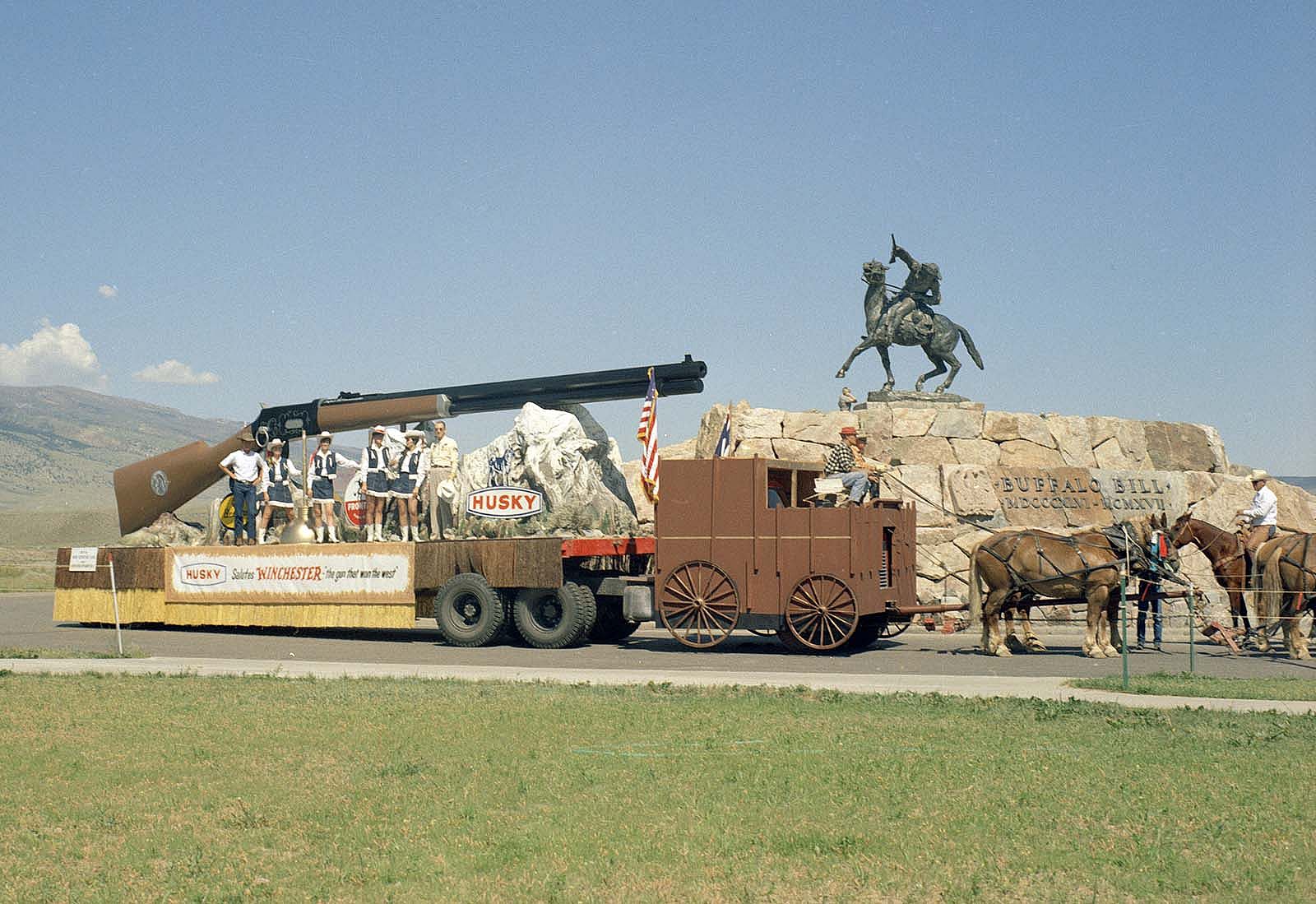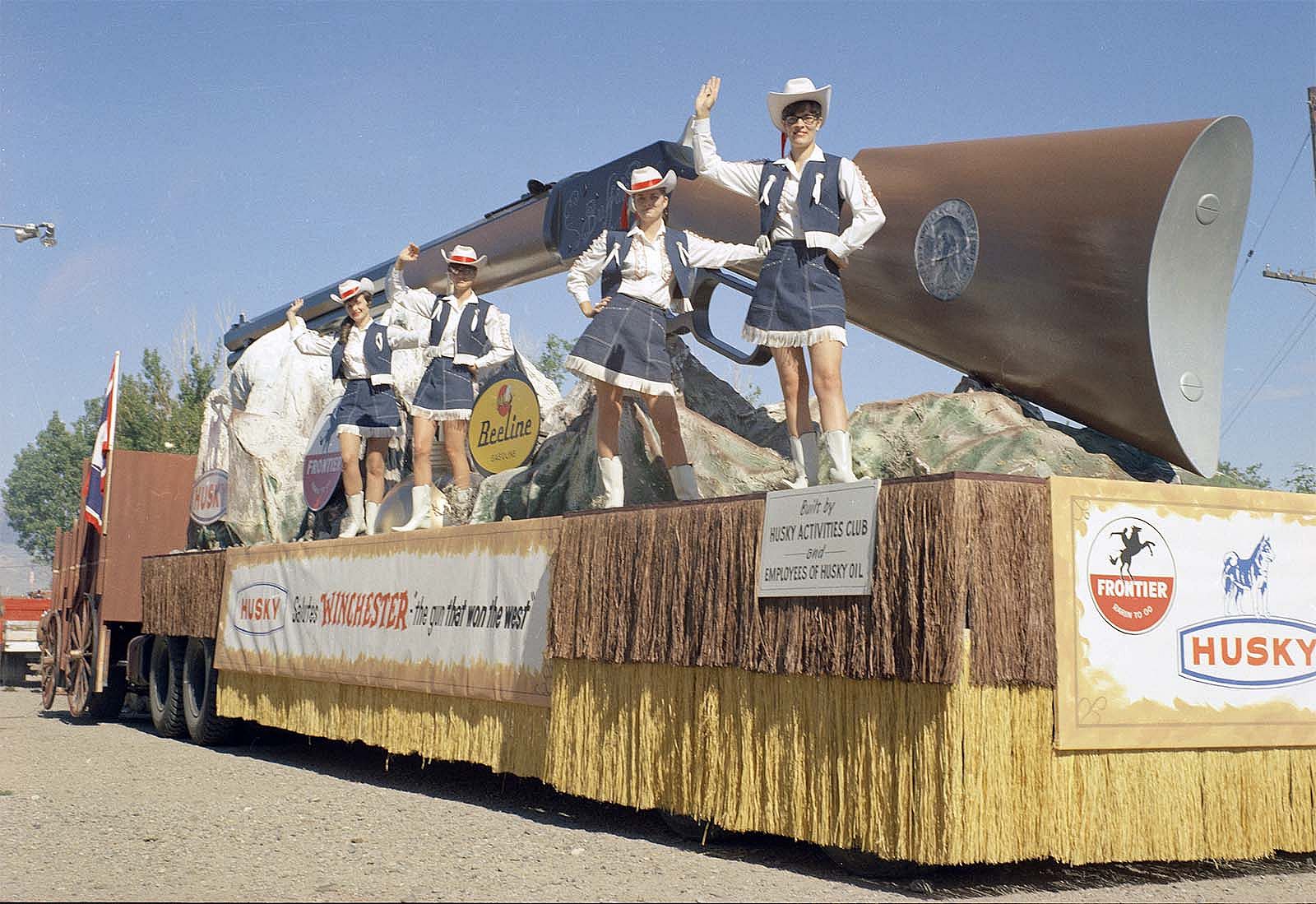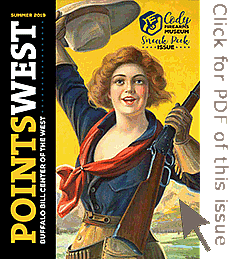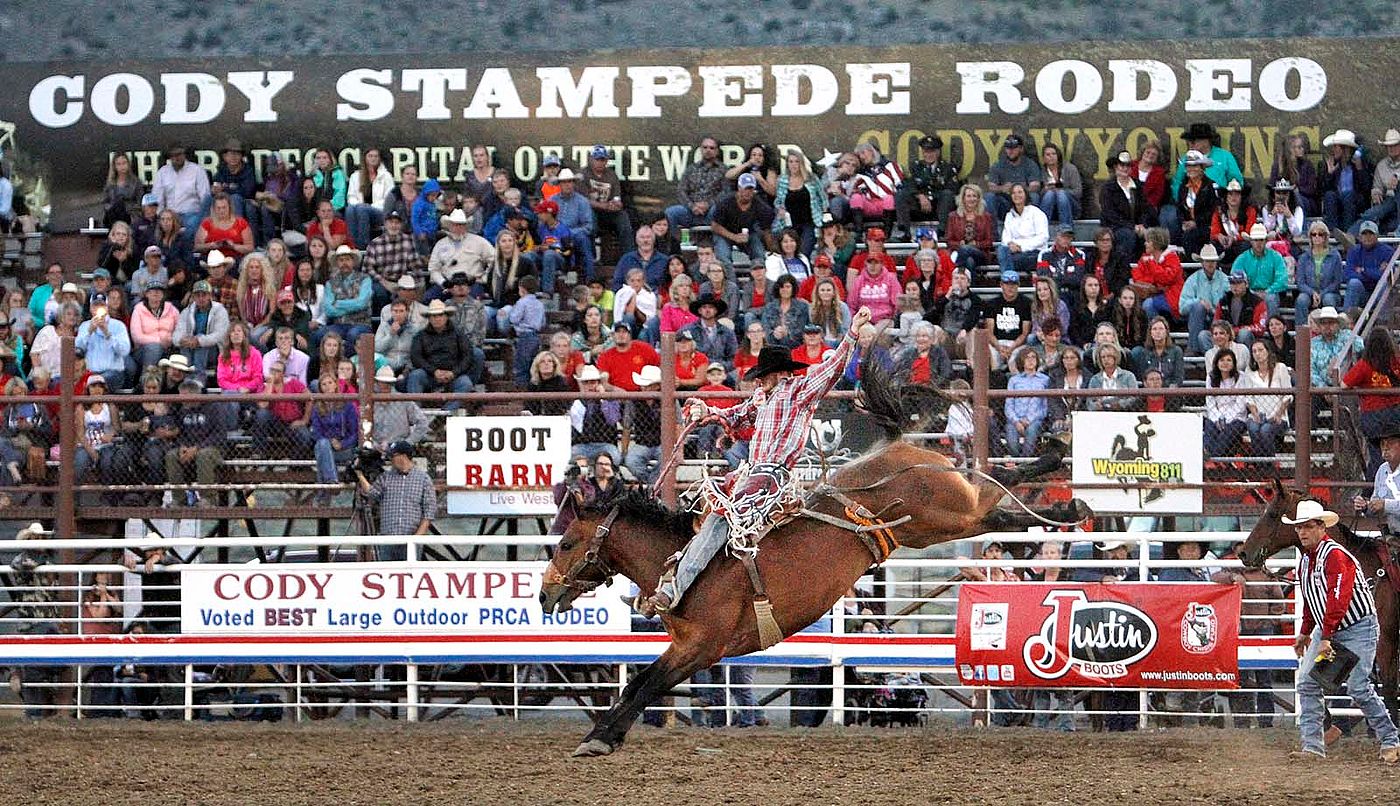
Cody Stampede Celebrates 100 Years – Points West Online
Originally published in Points West magazine
Summer 2019
Cody Stampede Celebrates 100 Years
Ed. Note: The authors co-curated the special exhibition Whoop It Up! Celebrating 100 Years of the Cody Stampede, on view at the Center of the West from June 7, 2019, at least through 2020.
By Jeremy Johnston, PhD, and Mary Robinson
For a few days each July, Cody, Wyoming, hosts an internationally renowned celebration of Independence Day with a parade and rodeo—collectively known as the Cody Stampede. On July 1–4, the local community attracts professional rodeo riders and ropers, tourists from around the world, and even Hollywood stars who now and then serve as the Stampede Parade Grand Marshal.
Local businesses sponsor parade floats designed on that year’s theme, always honoring the American West. With great fanfare, they proceed down Cody’s main street, Sheridan Avenue, accompanied by riding groups, marching bands, and various state political leaders. Then, later in the day, Stampede Park on the West Strip offers a highly competitive rodeo, cementing Cody’s title as the “Rodeo Capital of the World.”
After a hundred years, this annual celebration remains a seminal event for the town of Cody, and every year, the Stampede reaffirms its historical connections to the legacy of William F. “Buffalo Bill” Cody and the lands and peoples of the American West.

Boots and Chaps and Cowboy Hats
Like many western communities, early residents of Cody and the surrounding ranches organized informal bucking-horse contests, sometimes out on the prairie within a circle of mounted horsemen for a corral. They brought the wildest of broncs off winter range to challenge their athletic capabilities. Cowboys and cowgirls also competed in races and a variety of specific challenges, such as calf roping and steer wrestling, skills derived from the everyday work of cattle ranching. Often, they merely passed a hat to reward the winners. Residents gathered to enjoy the show, and, as demonstrated in an early photo, even watched the fun from the roof of a ranch house.
Buffalo Bill helped develop and promote a community mostly populated by farmers and linked it to the then-emerging global popularity of the American Cowboy. Buffalo Bill’s Wild West featured the equestrian skills of a “congress” of diverse riders—including Lakota, vaqueros, and cowgirls—through races, bucking bronco contests, and square dances on horseback. They even coordinated a soccer match with players on horseback attempting to score a goal at the end of the field! In the process, the Wild West transformed the American Cowboy into a national, working-class hero, a legacy carried forward throughout the remainder of the twentieth century in film and television.
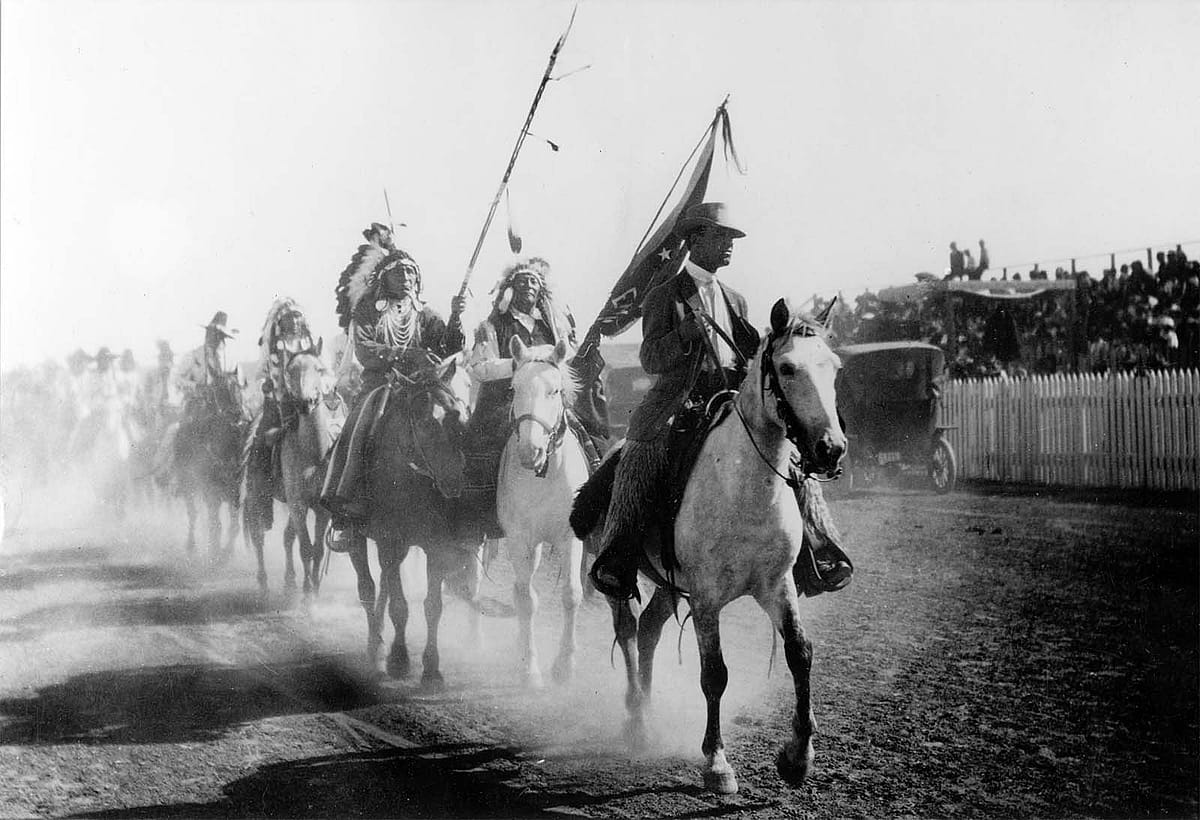
Then in 1913, the town of Cody hosted the Prince of Monaco for the Park County Fair, an event that heralded the future Cody Stampede. Buffalo Bill instructed arena director Johnny Baker to stage a parade of Crow Indians—led by Chief Plenty Coups—accompanied by Wild West performers. The Prince, who had traveled to northwest Wyoming for a guided big game hunt, viewed the procession from the balcony of the Irma, Buffalo Bill’s “original hotel in the Rockies,” pleased that he extended his visit “to see more of Park County’s frontier celebration” according to the Park County Enterprise.
After the parade, local entrepreneur Jacob M. Schwoob drove the prince to the fairgrounds and enjoyed a grand review of Wild West riders led by Baker, followed by horse racing and bucking contests. The Northern Wyoming Herald reported on September 19, 1913, “No one except Colonel Cody could have done it, and it would have been impossible for him in any other place in the world except Park County where he had scores of the best riders on the globe from which to select his actors.”
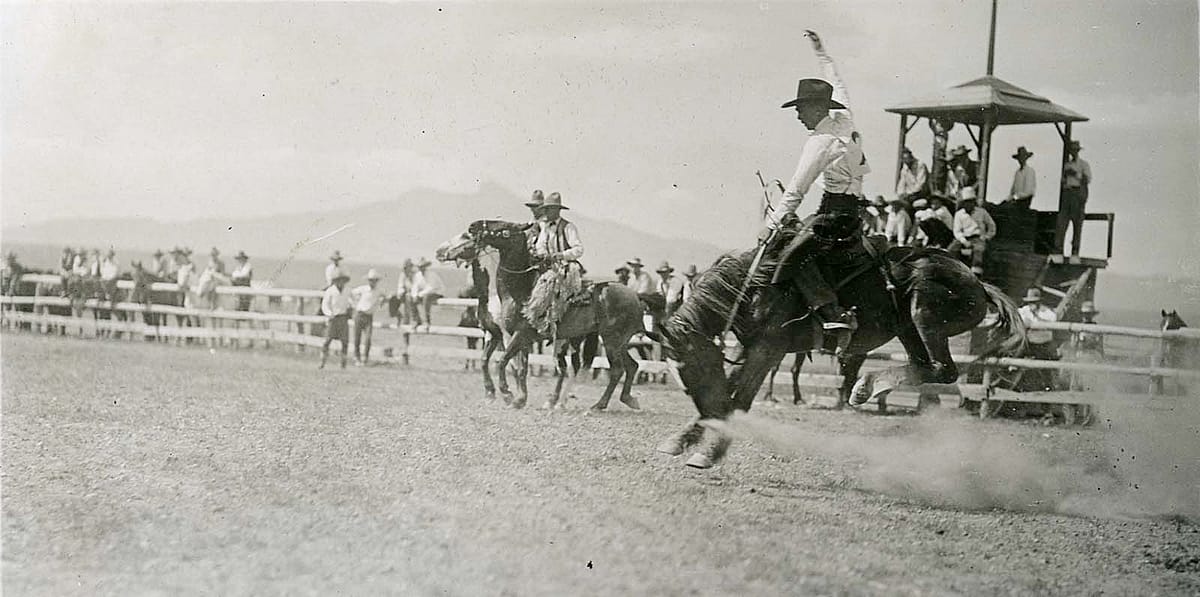
Let ‘Er Buck!
After Buffalo Bill passed away on January 10, 1917, residents continued to capitalize on his legacy to entice Yellowstone-bound tourists to stay a few days in the small town of Cody. One local booster was Clarence Williams, a former stagecoach driver who delivered visitors from Cody to Yellowstone. He was also an early promoter of allowing motor vehicles into Yellowstone National Park.
In June 1919, Williams organized an “Entrance Day Rodeo” in conjunction with the opening of the Park’s East Entrance to motor vehicles. Young men, lately returned to their rural homes from the trenches of World War I, showed up to compete against talented riders from around the neighboring Big Horn Basin and southern Montana. There were Crow Indian dancers, rodeo clowns, races, and substantial rewards for the winners. The occasion marked the beginning of what we know today as the Cody Stampede.
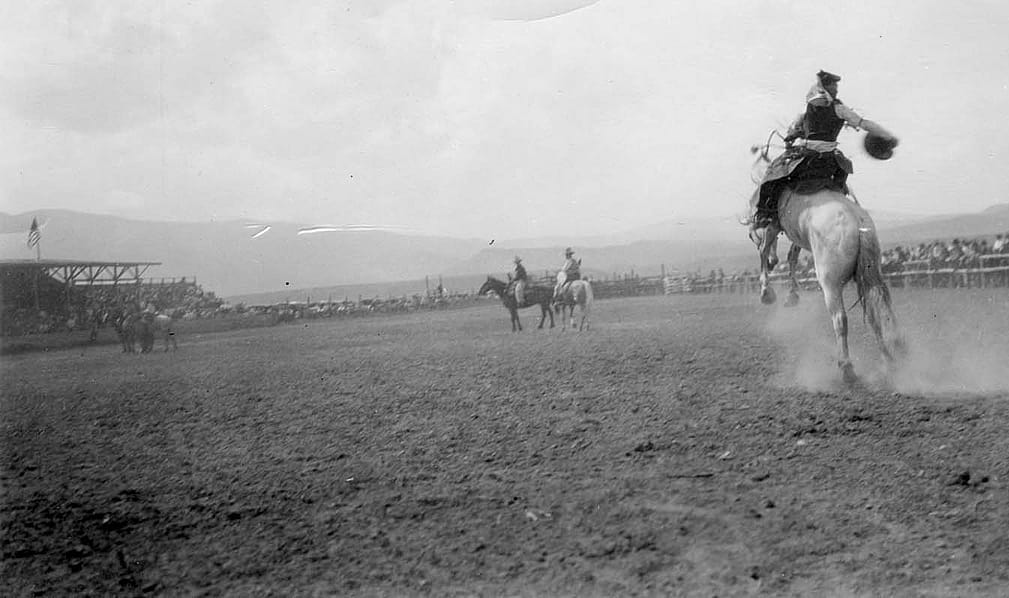
In 1920, the name changed; the date switched to a July celebration; and a formal organization followed. Western novelist and local resident Caroline Lockhart served as the first director of the Cody Stampede Board, whose membership included Valley (dude) Ranch owner Larry Larom, Clarence Williams, Sidney A. Eldred, Ernest Goppert Sr., and William Loewer.
In addition to various rodeo events and demonstrations of equestrian skills, the community celebrated downtown at “Wolfville,” a dance hall and local watering hole, named in honor of the fictional Arizona town that served as the setting for Alfred Henry Lewis’s western novels. Acknowledging their debt to the great celebrity, the opening Stampede parade of riders always paused at the Irma Hotel to pay their respects to Buffalo Bill.
Stampede Saddles Up as Cody’s Signature Event
Through the decades, the Cody Stampede continued to grow. Dude ranches were established in the hinterlands and promoted a western experience to their guests that included an annual visit to the Stampede. The purse awards for the customary rodeo events grew larger as sponsorships rolled in. To compromise with the neighboring farming community of Powell, Cody eventually became the county seat of Park County in exchange for moving the fairgrounds east to Powell.
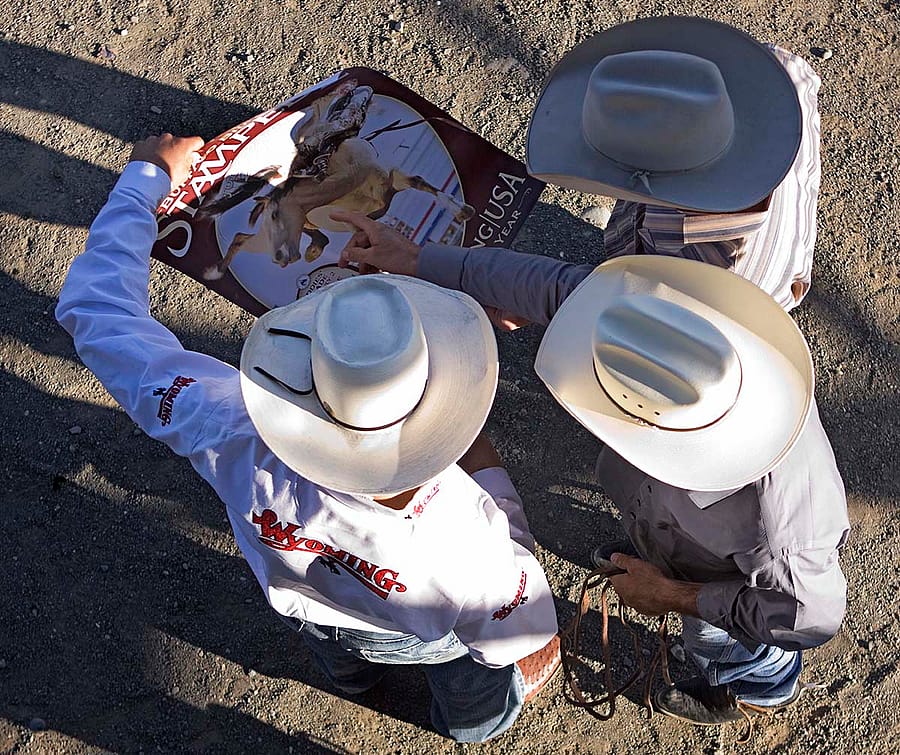
Every summer, the town newspaper, the Cody Enterprise, and local businesses encouraged residents to don western apparel and pull on their cowboy boots in hosting the annual Cody Stampede. The essential elements of celebrity, rodeo, and the appeal and romance of the cowboy drew crowds and allowed the Stampede to survive the economic challenges of the Great Depression and re-emerge even stronger after a brief hiatus due to World War II.
In 1946, the Cody Stampede was sanctioned as a member of the Rodeo Cowboys Association (which became today’s Professional Rodeo Cowboys Association in 1975). That same year, a new rodeo development with covered grandstands and a capacity for three thousand people opened on the bench above Cody next to the street still known as Stampede Avenue.
Celebrities from Gary Cooper to John Wayne have ridden down Sheridan Avenue as Grand Marshals of the Cody Stampede Parade, as well as other heroes like Chuck Yeager, the first pilot to break the sound barrier. Rodeo legends such as Nick Knight, Mel Stonehouse, and “Cody” Bill Smith competed for prizes within the arena of the rodeo grounds—which moved to the west end of town in 1975. Moreover, every year residents continue to celebrate the Fourth of July with music and dancing.
The small town that emerged in the late 1890s, named in honor of Buffalo Bill, lives up to its claim to be the “Rodeo Capital of the World” and looks forward to another hundred years of the world famous Cody Stampede.
About the authors
Dr. Jeremy Johnston is the Center’s Historian | The Hal & Naoma Tate Endowed Chair of Western | Managing Editor of the Papers of William F. Cody.
Mary Robinson is Housel Director of the Center’s McCracken Research Library.
Post 279
Written By
Nancy McClure
Nancy now does Grants & Foundations Relations for the Center of the West's Development Department, but was formerly the Content Producer for the Center's Public Relations Department, where her work included writing and updating website content, publicizing events, copy editing, working with images, and producing the e-newsletter Western Wire. Her current job is seeking and applying for funding from government grants and private foundations. In her spare time, Nancy enjoys photography, reading, flower gardening, and playing the flute.
